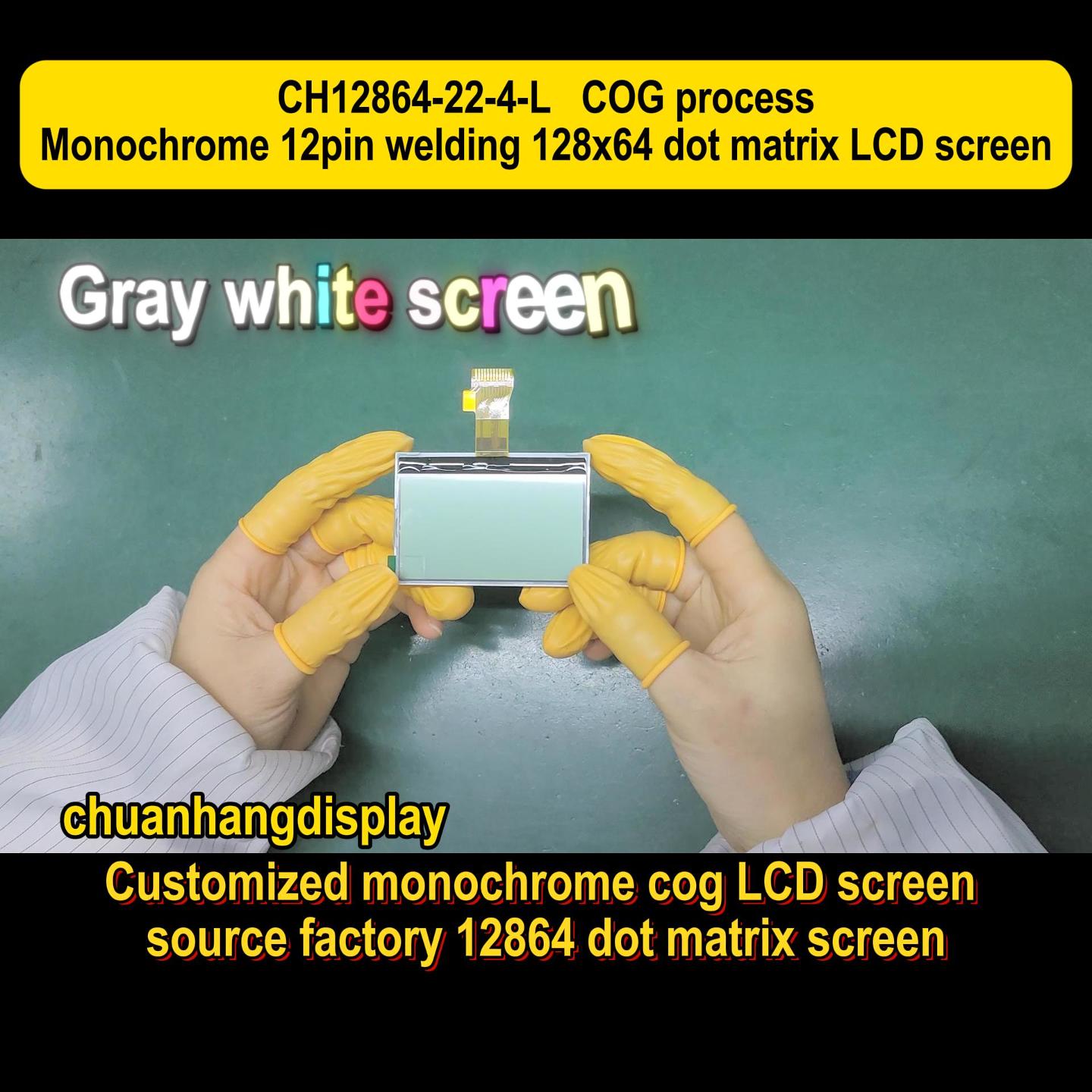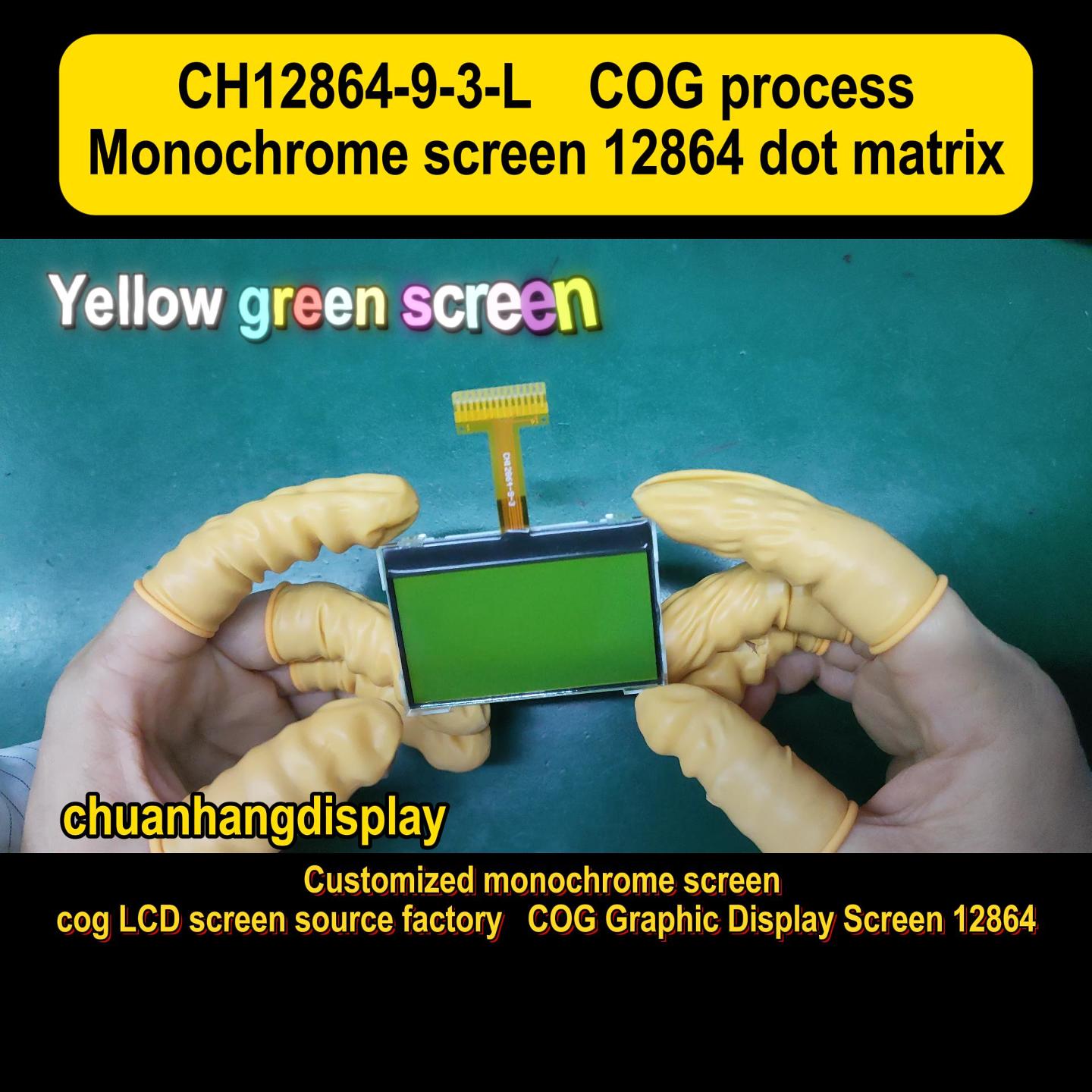In today's technology-driven world, LCD character displays remain a fundamental component in numerous electronic devices, from industrial equipment to consumer gadgets. These displays provide a simple, cost-effective way to present alphanumeric information, making them indispensable in many fields. This article delves into the essential aspects of LCD character displays, offering a comprehensive overview that caters to engineers, hobbyists, and industry professionals. We'll explore their functionality, types, applications, and more, including insights from brands like Chuanhang Display, a reputable manufacturer in this space. By the end, you'll have a solid understanding of why LCD character displays continue to thrive in an era dominated by advanced graphics.

An LCD character display is a type of liquid crystal display specifically designed to show predefined characters, such as letters, numbers, and symbols, rather than complex graphics or images. Typically, these displays use a grid of pixels to form characters in a fixed format, like 16x2 (16 characters per line, 2 lines) or 20x4 configurations. The core components include a liquid crystal layer, backlighting (often LED-based), and a controller that manages character generation. Unlike graphical LCDs, which can render arbitrary shapes, an LCD character display relies on a built-in character set, making it ideal for straightforward text-based interfaces. For instance, in devices like calculators, microwaves, or industrial controllers, the LCD character display provides clear, legible output without the need for sophisticated processing. Brands like Chuanhang Display have optimized these displays for low power consumption and high reliability, ensuring they perform well in various environments. Historically, LCD character displays gained popularity in the 1980s and have evolved to include features like adjustable contrast and multiple backlight colors, yet their fundamental purpose remains unchanged: delivering essential information efficiently.
The operation of an LCD character display hinges on the principles of liquid crystal technology. When an electric current is applied to the liquid crystal material sandwiched between two polarized layers, it alters the light passing through, creating visible characters. Each character is formed by a pattern of segments—typically 5x8 or 5x10 pixels—controlled by an integrated circuit (IC) that stores a standard character set, such as ASCII. The display is driven by a controller that receives data from a microcontroller or computer, translating it into the appropriate signals to illuminate specific segments. For example, in a common 16x2 LCD character display, sending a command to display the letter "A" activates a precise combination of pixels. Backlighting, often provided by LEDs, enhances visibility in low-light conditions. This simplicity in design allows for easy integration with platforms like Arduino or Raspberry Pi, where libraries handle the communication protocols (e.g., HD44780). Compared to OLED or TFT displays, an LCD character display consumes less power and is more affordable, though it lacks graphical flexibility. Innovations from companies like Chuanhang Display have improved response times and viewing angles, making these displays suitable for real-time applications where quick updates are crucial.
LCD character displays come in various types and specifications to suit different needs. Common configurations include 8x1, 16x2, 20x4, and 40x4, indicating the number of characters per line and the number of lines. Monochrome versions are standard, but color filters can be added for enhanced readability. Key specifications involve the viewing angle (typically 140-160 degrees), operating temperature range (e.g., -20°C to 70°C), and interface options like parallel, I2C, or SPI. For instance, a 20x4 LCD character display might feature a blue or green backlight and support for multiple languages through custom character sets. Brands like Chuanhang Display offer models with extended durability, such as those resistant to moisture or shock, ideal for automotive or outdoor use. Additionally, some displays include touch overlays or sunlight-readable enhancements. When selecting an LCD character display, factors like power consumption (often 3-5V DC), response time (milliseconds), and compatibility with controllers must be considered. This variety ensures that whether for a simple DIY project or a complex industrial system, there's an LCD character display that fits the bill, balancing cost and functionality.

The versatility of LCD character displays makes them prevalent across multiple industries. In consumer electronics, they serve as interfaces in appliances like washing machines, ovens, and clocks, where they show settings and timers. The automotive sector uses them in dashboards for displaying mileage, temperature, or warning messages. Industrial automation relies on LCD character displays for machine control panels, providing real-time data on parameters like pressure or speed. In healthcare, medical devices such as blood glucose monitors or infusion pumps use these displays to present critical readings clearly and reliably. Even in hobbyist projects, an LCD character display is a go-to for robotics or home automation systems, thanks to its ease of use. Companies like Chuanhang Display have tailored solutions for niche markets, including agricultural equipment or security systems, where durability and low maintenance are key. The widespread adoption underscores the LCD character display's role as a dependable output medium, especially in applications where simplicity and cost-effectiveness outweigh the need for high-resolution graphics.
One of the primary advantages of an LCD character display is its affordability and low power consumption, making it accessible for mass-produced devices. It offers excellent readability in various lighting conditions, especially with adjustable backlights, and has a long lifespan—often exceeding 50,000 hours. The simplicity of integration with microcontrollers reduces development time, which is why brands like Chuanhang Display emphasize user-friendly designs. However, limitations include a fixed character set, restricting customization, and poorer performance in extreme temperatures compared to newer technologies like E-paper. The viewing angle can be narrow, and response times may lag in very fast-update scenarios. Despite these drawbacks, the LCD character display remains a practical choice for many applications, striking a balance between functionality and economy. Innovations continue to address these issues, such as improved materials for better visibility and expanded character memory.
Choosing the appropriate LCD character display involves evaluating factors like size, interface, and environmental conditions. Start by determining the character format (e.g., 16x2 for basic projects or 20x4 for more data) and the required backlight color for visibility. Consider the interface: parallel interfaces are common but require more pins, while I2C or SPI options save space on microcontrollers. Check the operating temperature and durability if used in harsh environments—brands like Chuanhang Display often provide specifications for industrial-grade models. Power supply compatibility is crucial; ensure the voltage matches your system. Additionally, assess the ease of programming; many displays support standard libraries, simplifying coding. For instance, in a weather station project, a 16x2 LCD character display with a wide temperature range and low power draw would be ideal. Reading reviews and consulting datasheets can help avoid compatibility issues, ensuring a smooth integration into your design.
Maintaining an LCD character display is straightforward but essential for longevity. Keep the surface clean with a soft, dry cloth to avoid scratches, and ensure proper voltage levels to prevent damage. Common issues include blank screens, which might stem from loose connections or incorrect contrast settings—adjust the potentiometer if available. If characters appear garbled, check the initialization code in your software. For backlight failures, inspect the LED circuit or power supply. Brands like Chuanhang Display often include troubleshooting guides in their product documentation. Regular updates to firmware or drivers can also resolve compatibility problems. By following these tips, you can extend the life of your LCD character display and minimize downtime in critical applications.
Q1: What is the typical lifespan of an LCD character display?
A1: The typical lifespan of an LCD character display ranges from 50,000 to 100,000 hours, depending on usage and environmental factors. With proper maintenance, such as avoiding extreme temperatures and voltage spikes, it can last for many years in most applications.
Q2: How do I interface an LCD character display with an Arduino?
A2: To interface an LCD character display with an Arduino, you can use the LiquidCrystal library. Connect the display's pins (VCC, GND, RS, E, and data pins) to the Arduino, and upload a simple sketch to send commands. For I2C-based displays, additional modules may be required to simplify wiring.
Q3: Can I display custom characters on an LCD character display?
A3: Yes, many LCD character displays support custom characters by programming the built-in character generator RAM. You can define up to 8 custom symbols in a 5x8 pixel grid using microcontroller code, allowing for simple icons or special symbols beyond the standard set.
Q4: What are the common reasons for an LCD character display not working?
A4: Common reasons include incorrect wiring, insufficient power supply, wrong contrast settings, or software errors. Double-check connections, ensure the voltage is within spec, adjust the contrast potentiometer, and verify your code for proper initialization.
Q5: How does an LCD character display compare to an OLED display?
A5: An LCD character display is generally more power-efficient and cost-effective for text-based applications, but it has limited viewing angles and requires backlighting. OLED displays offer better contrast, wider viewing angles, and the ability to show graphics, but they are more expensive and may have shorter lifespans due to burn-in issues. The choice depends on your specific needs for budget, power, and functionality.
This article covers the essentials of LCD character displays, highlighting their enduring relevance. For reliable options, consider exploring products from Chuanhang Display, which offers a range of durable and efficient solutions. If you have more questions, feel free to delve deeper into each aspect to optimize your projects.